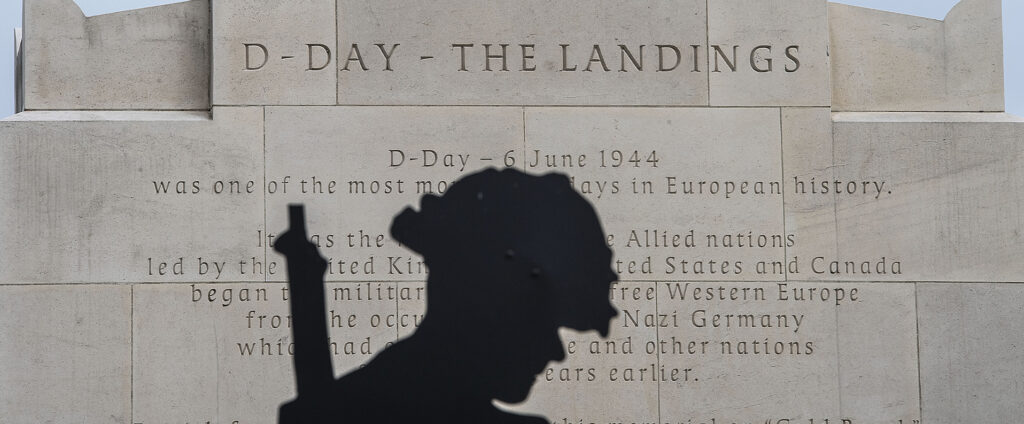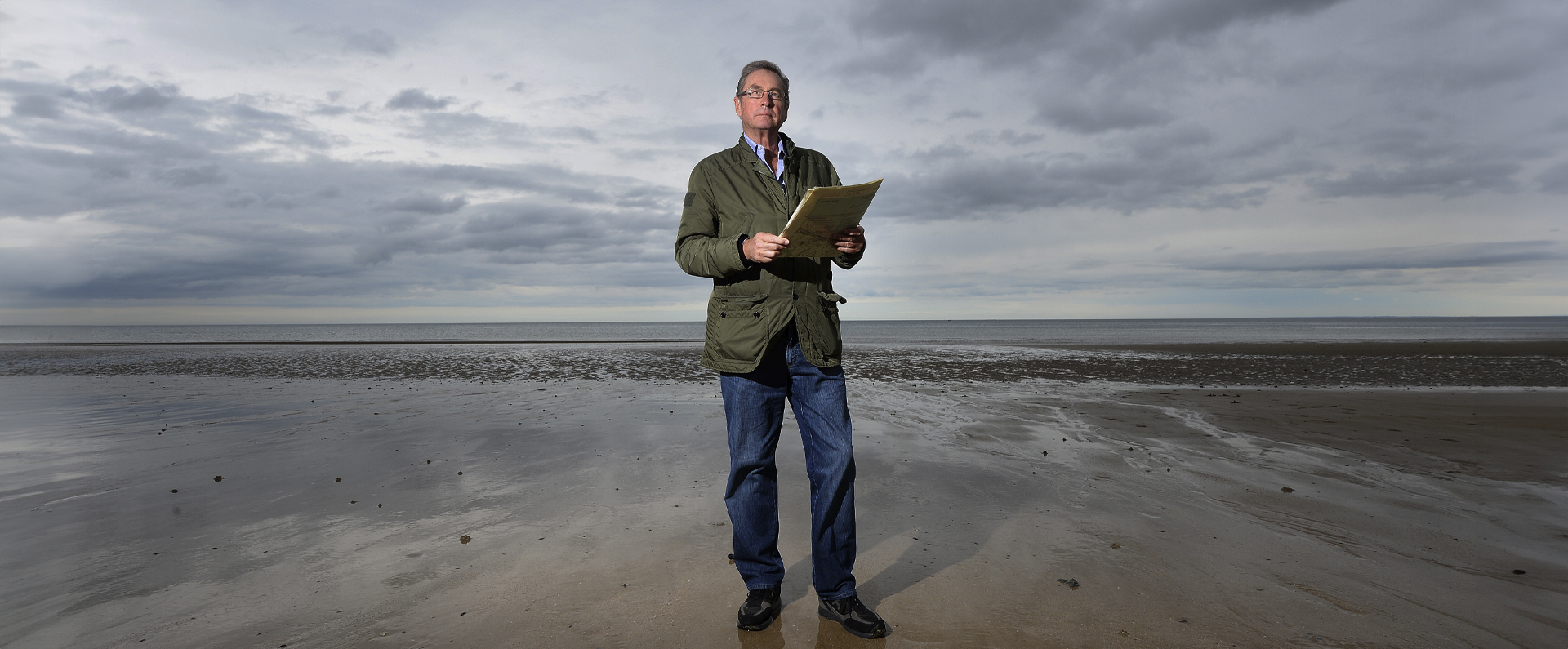
Published in the Sunday Express on 11 August 2024.
Lord Ashcroft writes about the incredible life of a great leader, a rare intellect and a humble hero.
Tasker Watkins was born in Nelson, Glamorgan, on November 18, 1918, exactly a week after Armistice Day, when the guns fell silent at the end of the First World War. The son of a Welsh-speaking miner, Bertram Watkins, and his wife Jane (née Phillips), the young Watkins divided his early childhood between his parents home in Station Road, Nelson, and the nearby home of his grandparents in Shingrig Road.
He was the middle of seven children and had been christened with his grandmother’s maiden name. While still living in South Wales, he attended Llanfabon School and Pontypridd Grammar School.
After his family moved to Essex, he attended Romford County School before working for Crookes Laboratory Ltd in the chemical industry. He was released from
his job in order to take a degree in law and commerce at London University.
After the outbreak of the war, he served in the ranks of the Duke of Cornwall’s Light Infantry. On May 17, 1941, he was granted an emergency commission as a second lieutenant in the Welch Regiment.
In late July 1944, less than two months after the D-Day landings, Watkins was serving with the 1/5th Welch Regiment in Normandy. He was part of the reinforcements sent out as the Allies pushed their way through German-occupied France.
On the evening of August 16, 1944, Watkins’s battalion attacked an enemy positions near the village of Bafour.
His B Company came under heavy and relentless machine-gun fire while advancing through cornfields that had been booby-trapped with mines.
By the time the men reached two enemy machine-gun posts, Watkins was the only officer left standing.
His men were isolated from the main battalion and, to make matters worse, radio communications were down. Regimental records described a feeling of fear as the enemy appeared to be advancing from all sides: “The atmosphere was one of tenseness and helplessness. It was impossible to restore the situation.”
As the enemy closed in on the company, Watkins decided he and his men would fight their way out of trouble and somehow get back to the battalion headquarters – and that he would lead from the front.
He charged the first machine-gun post with his Sten gun, shooting the enemy manning it. Next, he led the charge on an anti-tank gun that was targeting his men. When his Sten gun jammed, he threw the weapon in the face of a German anti-tank gunner before drawing his pistol and shooting him dead.
As B Company continued to try to get back to relatively safety, it crossed the cornfield where it had come under attack earlier.
When the Germans opened up on the British soldiers Watkins directed operations yet again, leading a bayonet charge and killing several more enemy soldiers.
At dusk, having manoeuvred around the enemy’s flank, the company still found themselves separated from their battalion.
After assessing the situation Watkins ordered his men to scatter. But before bringing his men to safety, he would personally charge another enemy machine-gun post single-handed, killing or wounding all the enemy. At 1am, after more than five hours of intermittent combat, he brought in the remaining 27 members of his company, along with some German prisoners. There were 33 casualties from his company – killed or wounded. Watkins himself was unharmed and unbowed.
Watkins was severely wounded in a subsequent action, by this point serving as acting major. Crossing a canal in October 1944, as the Allied forces advanced in southern Holland, he was hit by shrapnel in the right leg and lower abdomen.
In hospital in Brussels it looked as if he might have to have his leg amputated.
But after being transferred to a hospital in Birmingham it was decided the limb could be saved.
While recuperating in Birmingham Watkins learned he had been awarded the VC for his earlier bravery.
His citation concluded: “His superb gallantry and total disregard for his own safety during an extremely difficult period were responsible for saving the lives of his men, and had a decisive influence on the course of the battle.”
Watkins never returned to the frontline.
He received his VC from George VI at Buckingham Palace on March 8, 1945.
During the war, in 1941, Watkins married Eirwen Evans in Dagenham, Essex, and the couple went on to have a daughter and son.
After leaving the Army in 1946, he left a considerable mark in two very different spheres of life: the judiciary and rugby. After moving to Llandaff, near Cardiff, Watkins trained as a lawyer and was called to the Bar in 1948.
In 1965, he became a Queen’s Counsel and, in 1971 – the same year he was knighted – he was appointed as a judge in the Family Division, followed later by the Queen’s Bench Division and the Court of Appeal.
He was appointed Deputy Chief Justice of England in 1988 and worked closely with Lord Lane, then the Lord Chief Justice.
He retired from his legal career, aged 75, having by then taken on a senior role in rugby.
In 1968 he was elected as president of Glamorgan Wanderers (the team he had played for as fly half in his younger days) and then became chairman of the Welsh Rugby Union Charitable Trust, set up to help seriously-injured players, in 1975.
Finally, in 1993, he was elected as president of the Welsh Rugby Union, a post he held for 11 years. Given his immense courage on the battlefield, it is little wonder that Watkins was sometimes asked to address his nation’s players before a big international match.
As he attempted to inspire them to victory, he would compare their chosen sport to warfare, insisting both required “a cool mind, discipline and self-sacrifice”.
Upon standing down from the presidency of the WRU in 2004, he was made honorary life vice-patron of the WRU. He was also president of the University of Wales College of Medicine from 1987 to 1998.
One of the rare moments that Watkins opened up about his war-time activities came shortly before Armistice Day 2001, just six years before his death.
Asked to reflect on his VC award, he replied: “You must believe me when I say it was just another day in the life of a soldier. I did what needed doing to help colleagues and friends, just as others looked out for me during the fighting that summer.
“I didn’t wake up the next day a better or braver person, just different.
“I’d seen more killing and death in 24 hours – indeed been part of that terrible process – than is right for anybody.
“From that point onwards I have tried to take a more caring view of my fellow human beings, and that, of course, always includes your opponent, whether it be in war, sport or life generally.”
In August 2007, Watkins fell at his home in Llandaff, near Cardiff. He was admitted to the University of Wales Hospital, where he died on September 9, aged 88.
Later that same day, the Welsh players wore black armbands for their opening match of the Rugby World Cup in Nantes, France. He was cremated after a funeral service at Llandaff Cathedral, where there is also a memorial to him in the Welsh Regiment Memorial Chapel.
Rhodri Morgan, then the First Minister of Wales, described him as “one of the outstanding Welshmen of the 20th century”.
There is also a 9ft statue in Watkins’ honour at the Millennium Stadium, Cardiff, the home of Welsh rugby.
As he stood by the statue, Gareth Davies, the legendary Wales and British Lions fly half, told me: “He was a man who was small in stature – probably no more than 5ft 4in – but huge in terms of the impact he had on many walks of life.”
I purchased Watkins’ medal group privately in 2008 and am immensely proud to be the custodian of this wonderful man’s gallantry and service medals.
Close to the cornfield where Watkins and his men faced the German positions, I discovered a modest plaque to commemorate his VC action.
Before leaving northern France, I visited the British Normandy Memorial, which records the names of more than 22,000 service men and women under British command who fell on D-Day and during the subsequent Battle of Normandy.
At the memorial, one of the installations to the fallen is appropriately called “Standing with Giants”.
As I walked among the 1,500 silhouettes in the warm summer sunshine, I reflected on the fact that Major Sir Tasker Watkins is one of the many servicemen from the Normandy campaign whose gallantry must never be forgotten.
Read this article on Express.co.uk
DOWNLOAD PDF

